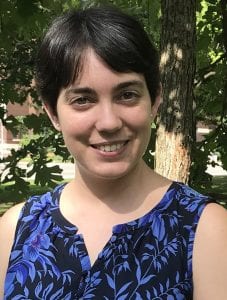
Department of Chemistry and Biochemistry
Organic/Inorganic/Materials Seminar Series
Michel Barsoum, Drexel University
3pm Friday October 10, Willamette Hall 110
Host: Matthias Agne
Title: Quantum-Confined 1D Lepidocrocite Titanates and Their Exceptional Properties
Abstract: In 2022, we discovered that reacting >15 Ti-compounds with tetraalkylammonium hydroxides, at 1 atm. and temperatures < 100°C – more recently at room temperature – converts them into truly one dimensional, lepidocrocite-titania, 1DL, nanofilaments ≈ 5×7 Å2 in cross-section. Quantum confinement to 1D, boosts Eg to ≈ 4 eV. With effective specific surface areas >1500 m2/g, some of their properties are outstanding such as record photochemical H2-production with exceptional (>6 months) stability. DFT calculation suggest 1DLs are thermodynamically stable in water; if so, this would be a first for a 1D material. We show excellent OER rates and stabilities. Electrodes made with 1DLs, or their composites, perform well in supercapacitors, S- and Li-batteries. The record adsorption of heavy metal cations and cationic dyes and the photochemical degradation of the latter into CO2 and water is discussed. The ease, low cost, one pot simplicity and scalability of our process cannot be overstated. Last year we made a 1 kg batch in a lab setting.
Bio: Prof. Michel W. Barsoum is Distinguished Professor in the Department of Materials Science and Engineering at Drexel University. He is an internationally recognized leader in the area of MAX phases and more recently the 2D solids labeled MXenes derived from the MAX phases. Ten years ago he discovered a new universal mechanism – ripplocation – in the deformation of layered solids. Most recently he discovered a new form on titania: a truly one-dimensional titania. At a core-section of 5×7 Å, this titania is the thinnest possible. With over 550 refereed publications and a Google h index is 151, his work has been cited >136,000 times to date. He has been listed on the Web of Science’s highly cited researchers list from 2018 to the present. According to a recent Stanford University study, he had the highest c-index (combines citations and h-index) in the Materials Science subfield for the last 3 years and is 4th on the all-time list of material scientists in the world. He is a foreign member of the Royal Swedish Society of Engineering Sciences, National Academy of Inventors, fellow of the American Ceramic Soc. and the World Academy of Ceramics. He is the author the books, MAX Phases: Properties of Machinable Carbides and Nitrides and Fundamentals of Ceramics, a leading textbook in his field. In 2020, he was awarded the International Ceramics Prize for basic science by the World Academy of Ceramics. This prize is awarded quadrennially and is one of the highest in his field. The prize was awarded for “… outstanding contribution in opening new horizons in material research and specifically for your pioneering work in MAX phases and their derivatives.”
 Department of Chemistry and Biochemistry
Department of Chemistry and Biochemistry


 Jim Prell
Jim Prell Mike Harms
Mike Harms
 Julia Widom
Julia Widom

 Department of Chemistry and Biochemistry
Department of Chemistry and Biochemistry